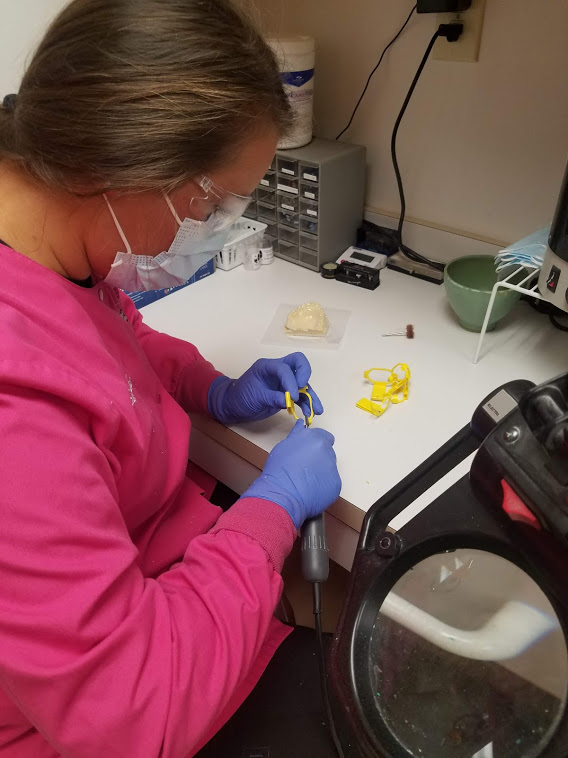The most common OSHA violations in the dental lab
The dental lab can be a dangerous place. Make sure your team is protected by following these tips.

Dr. Tom Hoffman knows inhalation, noise, eye and machinery hazards exist in the lab. This is why he ensures proper hearing and eye protection is available as well as proper ventilation. His team receives excellent training, uses state-of-the art equipment and highly organized storage areas, and wears all the necessary personal protective equipment. For Dr. Hoffman, it’s important the team have a safe, clean lab to work in because “Personal health and safety, pride in the workplace and knowing the employer cares are reflected in patient care,” he says.

The dental laboratory is inherently a dangerous place to work, so OSHA requires that employees are protected while on the job. To do that, many dental labs have put controls in place that help to maintain safety. Engineering controls are mechanical devices, like safety shields, that remove the hazards at their source. Administrative controls are safe work practices and policies that direct the employee through tasks while avoiding exposure. PPE is the final control that separates the employee from the potential hazard in the work place using barrier protection. These controls are important, but laboratory-acquired infections and injuries still occur in many dental labs today.
Read more: 5 surefire ways to get an OSHA inspection in your dental lab
One of the most common issues seen in labs today is the lack of the use of face or eye protection when it’s needed. The standards put forth by OSHA require face protection wherever splash or impact risks occur in the laboratory. Staff pouring chemicals without the use of proper goggles would be a violation if the safety data sheet (SDS) specifically requires the use of eye protection. For example, one manufacturer lists asthmatic reactions, local neurological symptoms, irritant and local dermatological reactions as possible adverse effects to acrylates. Other lab procedures where face protection is underutilized include using grinders, polishing wheels, lathes and drills. Impact-resistant eyewear should be used around any machinery, including high-speed handpieces, that might send projectiles.
to protect the hands of lab workers, but attention must be paid to when and how they should be used. Gloves are needed anytime an employee comes into contact with a hazardous chemical, blood or other potentially infectious material or any contaminated surface. Don’t assume that the partial, denture or prosthetic device has been disinfected prior to arrival. Even if it was, gloves should be worn in the event the item wasn’t disinfected properly. Gloves should also be used when putting supplies away, especially if those supplies include chemicals or reagents. Not all gloves are the same, so be sure to use chemical-resistant gloves when chemicals or reagents are handled.
Lab coat issues can be common as well. Lab coats and scrub jackets should always be buttoned up, otherwise they offer no protection in the front where it’s needed. Sleeves should never be rolled up so that arms remain protected as well from chemicals. If working with machinery, the sleeves of jackets and coats shouldn’t drape as they may get caught. Sometimes staff will remove lab coats because they’re feeling hot; however, that is never an acceptable reason for PPE not to be used. Be sure to keep a comfortable lab temperature or offer lightweight lab coats so that staff can work without feeling excessive heat.
Safety errors made in the laboratory can be due to a lack of education, and other times it may be staff complacency or an overall poor safety culture. Raising safety awareness and providing proper safety education is important. A true safety leader can help the lab reduce these safety control errors and place that laboratory on the path to a culture where all employees are protected.
